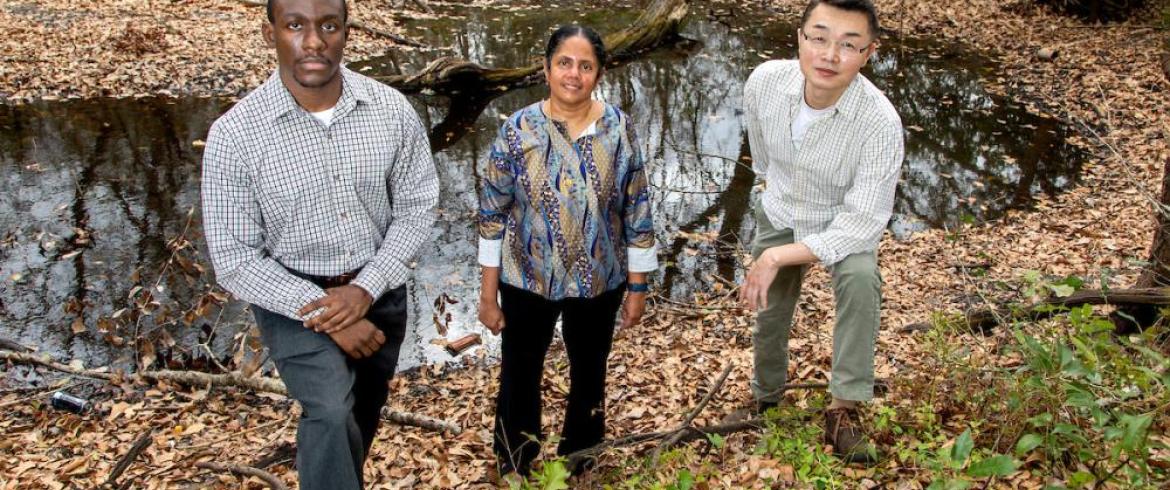
From left, Doctoral candidate Khaleel Muhammed, assistant professor of biological systems; Aavudai Swamy, Ph.D, and Gang Chen, Ph.D., P.E., a professor in Civil and Environmental Engineering at the FAMU-FSU College of Engineering work together on a study to Define-Investigate-Estimate-Map (DIEM) Framework for Modeling Habitat Threats and the effects on biodiversity. (M Wallheiser/FAMU-FSU Engineering)
Biodiversity is nature’s way of expressing the health of an ecosystem. Different kinds of species and plants are indicators that the environment is sustaining itself well. However, new challenges like climate change and the growing population are placing these fragile systems in peril.
A team of FAMU-FSU College of Engineering researchers want to help and have developed a novel tool to assess the biodiversity of an environment. Their work was recently published in Sustainability.
“We have come up with a universal method to model habitat,” Gang Chen, a professor in civil and environmental engineering at the college, said. “This has never been done before. The method we use is called DIEM and can define threats, investigate them, estimate the severity of the threat and map the area.”
Khaleel Muhammed, a doctoral candidate in the college’s department of civil and environmental engineering, is working with Chen on the new modeling technique. They used an innovative process to evaluate the Choctawhatchee River and Bay Watershed.
“We found the most abundant threat in the watershed was agricultural development, and the most destructive threat was urban development,” Muhammed said. “The research can translate to other similar areas in the country.”
Aavudai Anandhi, a professor in biological and agricultural engineering at Florida A&M University (FAMU), co-advises the team and developed the multi-model method to identify system processes and parameters for resource conservation. She holds a courtesy appointment with the department of civil and environmental engineering at the college and works on affiliated research with Chen.
“The DIEM framework is helpful in regional analysis, watershed modeling and land development planning,” Anandhi said. “It’s important to know how human practices and natural events threaten these habitats and the species living in them.”
The group analyzed 62 previous studies to determine how different authors define and characterize threats in various contexts. They applied this to the analysis when evaluating the Choctawhatchee River and Bay Watershed
The research was supported by a $1.2 million dollar grant from the National Institute of Food and Agriculture of USDA through Florida A&M University.
Related Research
New climate model helps researchers better predict water needs
